View a list of Programs and Tools Which Could Provide a Direct Incentive to a Landowner
For the purpose of this website, a direct incentive might include:
- A rental payment
- A one-time payment for a conservation easement
- Sell of a mitigation or carbon credit
- Payment for conservation projects without required financial match
- A payment for quality of conservation stewardship
Programs and Tools Which Could Provide a Direct Incentive to a Landowner
Click on a program below to learn more
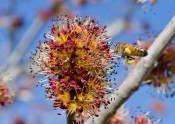 Agricultural Conservation Easement Program’s Wetland Reserve Easements - CEP WRE, created in the 2014 Farm Bill is the newest version of the previously authorized Wetlands Reserve Program. Under ACEP WRE, the Natural Resources Conservation Service (NRCS) provides financial and technical support to private landowners and Indian tribes to protect, enhance, or restore wetlands. A wetland reserve easement is used to accomplish this protection. Read More →
Agricultural Conservation Easement Program’s Wetland Reserve Easements - CEP WRE, created in the 2014 Farm Bill is the newest version of the previously authorized Wetlands Reserve Program. Under ACEP WRE, the Natural Resources Conservation Service (NRCS) provides financial and technical support to private landowners and Indian tribes to protect, enhance, or restore wetlands. A wetland reserve easement is used to accomplish this protection. Read More →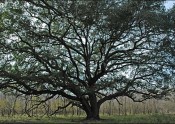 Carbon Storage and Credits: Landowner/Developer and Aggregators - Various Private and Nonprofit Entities Choosing a Marketplace for Carbon Trade No one single program deals with carbon offset credits. One branch of the carbon market is the compliance market where carbon emitters are required to offset their emissions by local, state, federal, or international policy. The other branch of the carbon market is the voluntary market where individuals and businesses volunteer to purchase carbon offsets in order to reduce their greenhouse gas emission impacts. There are several marketplaces (often called exchanges) for buyers and sellers of carbon... Read More →
Carbon Storage and Credits: Landowner/Developer and Aggregators - Various Private and Nonprofit Entities Choosing a Marketplace for Carbon Trade No one single program deals with carbon offset credits. One branch of the carbon market is the compliance market where carbon emitters are required to offset their emissions by local, state, federal, or international policy. The other branch of the carbon market is the voluntary market where individuals and businesses volunteer to purchase carbon offsets in order to reduce their greenhouse gas emission impacts. There are several marketplaces (often called exchanges) for buyers and sellers of carbon... Read More → Celebrate Urban Birds Mini-Grant Program - Cornell University Lab of Ornithology Celebrate Urban Birds (CUB) reaches out to underserved urban and rural communities to promote interest in birds, science, the arts, neighborhood greening, and habitat creation. Developed by the Cornell Lab of Ornithology, CUB has worked with over 9,000 community organizations around the country since 2007. CUB administers a mini-grant program to help fund CUB project and event costs. The average award for a mini-grant is between $100 and $750 dollars. Each CUB project will incorporate community involvement, the arts, greening, birds, and citizen... Read More →
Celebrate Urban Birds Mini-Grant Program - Cornell University Lab of Ornithology Celebrate Urban Birds (CUB) reaches out to underserved urban and rural communities to promote interest in birds, science, the arts, neighborhood greening, and habitat creation. Developed by the Cornell Lab of Ornithology, CUB has worked with over 9,000 community organizations around the country since 2007. CUB administers a mini-grant program to help fund CUB project and event costs. The average award for a mini-grant is between $100 and $750 dollars. Each CUB project will incorporate community involvement, the arts, greening, birds, and citizen... Read More →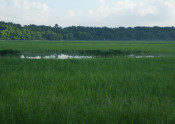 Conservation Reserve Program Continuous Signup - USDA Farm Service Agency (FSA) The Continuous Conservation Reserve Program (CCRP) is an agricultural land conservation program administrated by the Farm Service Agency (FSA) and is an offshoot of the Conservation Reserve Program (CRP). Like CRP, it is a voluntary program available to farmers and other agricultural and silvicultural operations with the mission to restore and protect environmentally sensitive lands with special emphasis on wetlands, wildlife habitat, and water quality buffers. As with the CRP program, farmers remove sensitive areas from agricultural production for 10 to 15 years.... Read More →
Conservation Reserve Program Continuous Signup - USDA Farm Service Agency (FSA) The Continuous Conservation Reserve Program (CCRP) is an agricultural land conservation program administrated by the Farm Service Agency (FSA) and is an offshoot of the Conservation Reserve Program (CRP). Like CRP, it is a voluntary program available to farmers and other agricultural and silvicultural operations with the mission to restore and protect environmentally sensitive lands with special emphasis on wetlands, wildlife habitat, and water quality buffers. As with the CRP program, farmers remove sensitive areas from agricultural production for 10 to 15 years.... Read More → Conservation Reserve Program General Signup - USDA Farm Service Agency (FSA) The Conservation Reserve Program (CRP) is an agricultural land conservation program administrated by the Farm Service Agency (FSA). Twenty years after its inception in 1985, CRP had reduced 450 million tons of soil erosion per year, restored 2 million acres of wetlands and adjacent buffers, reduced 48 million metric tons of carbon dioxide from the air, and protected 170,000 miles of stream. According to the Texas Parks and Wildlife Department, Texas currently has 3 million acres enrolled in CRP. CRP offers an annual... Read More →
Conservation Reserve Program General Signup - USDA Farm Service Agency (FSA) The Conservation Reserve Program (CRP) is an agricultural land conservation program administrated by the Farm Service Agency (FSA). Twenty years after its inception in 1985, CRP had reduced 450 million tons of soil erosion per year, restored 2 million acres of wetlands and adjacent buffers, reduced 48 million metric tons of carbon dioxide from the air, and protected 170,000 miles of stream. According to the Texas Parks and Wildlife Department, Texas currently has 3 million acres enrolled in CRP. CRP offers an annual... Read More →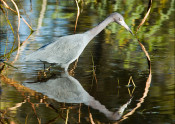 Conservation Stewardship Program (CStP) - USDA Natural Resources Conservation Service (NRCS) The Conservation Stewardship Program (CStP) is a voluntary conservation program administered by US Department of Agriculture (USDA) Natural Resources Conservation Service (NRCS). The program’s mission is to assist agricultural producers in maintaining and enhancing their existing conservation efforts, especially in relation to Texas’ program priorities: water quantity, soil erosion, and plant health and condition. The theme for CStP is “payment for performance“. Eligible lands include privately owned and Tribal agricultural lands, croplands, pasturelands, rangelands, grasslands, and nonindustrial private forest land. This includes... Read More →
Conservation Stewardship Program (CStP) - USDA Natural Resources Conservation Service (NRCS) The Conservation Stewardship Program (CStP) is a voluntary conservation program administered by US Department of Agriculture (USDA) Natural Resources Conservation Service (NRCS). The program’s mission is to assist agricultural producers in maintaining and enhancing their existing conservation efforts, especially in relation to Texas’ program priorities: water quantity, soil erosion, and plant health and condition. The theme for CStP is “payment for performance“. Eligible lands include privately owned and Tribal agricultural lands, croplands, pasturelands, rangelands, grasslands, and nonindustrial private forest land. This includes... Read More →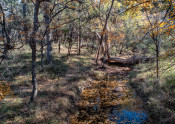 Forest Legacy Program (FLP) - Texas A&M Forest Service (TFS) About the Forest Legacy Program The Forest Legacy Program (FLP), administered by the Texas A&M Forest Service, the State of Texas, and USDA Forest Service, is a voluntary program which purchases conservation easements on forestland voluntarily offered for purchase by private landowners. Protecting priority forests from conversion to non-forested land use is the program’s goal. Forested wetland conservation is an aspect of this program. Eligible land must be in the Forest Legacy target area. Landowners must have clear title, be willing to permanently... Read More →
Forest Legacy Program (FLP) - Texas A&M Forest Service (TFS) About the Forest Legacy Program The Forest Legacy Program (FLP), administered by the Texas A&M Forest Service, the State of Texas, and USDA Forest Service, is a voluntary program which purchases conservation easements on forestland voluntarily offered for purchase by private landowners. Protecting priority forests from conversion to non-forested land use is the program’s goal. Forested wetland conservation is an aspect of this program. Eligible land must be in the Forest Legacy target area. Landowners must have clear title, be willing to permanently... Read More →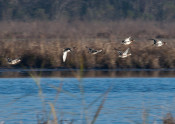 Mitigation Bank Credit: Landowners/Developers and Aggregators - Various Private and Nonprofit Entities Creating a Mitigation Bank Basic process for developing your own mitigation bank: Planning Pre-prospectus meeting with the US Army Corps of Engineers (USACE) Submission of draft prospectus for review by USACE. If USACE finds the prospectus feasible, it will be sent out on public notice for comment. Review by federal, state, and local agencies and general public Mitigation Bank Review Team assessment Mitigation bank instrument development – legal document for the bank Mitigation bank instrument is sent out for public notice Bank approval... Read More →
Mitigation Bank Credit: Landowners/Developers and Aggregators - Various Private and Nonprofit Entities Creating a Mitigation Bank Basic process for developing your own mitigation bank: Planning Pre-prospectus meeting with the US Army Corps of Engineers (USACE) Submission of draft prospectus for review by USACE. If USACE finds the prospectus feasible, it will be sent out on public notice for comment. Review by federal, state, and local agencies and general public Mitigation Bank Review Team assessment Mitigation bank instrument development – legal document for the bank Mitigation bank instrument is sent out for public notice Bank approval... Read More →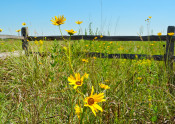 Purchase of Conservation Easements - Various Land Trust and Government Agencies Conservation easements often involve the donation of development rights of land. This donation is often used to obtain a tax deduction. However, in some cases, the development rights of land can be purchased by a willing land trust or government program for a one-time cash payment. Purchased conservation easements are also known as the purchase of development rights (PDRs). If there is funding available for the PDRs, the purchase price is often less than the value of the full value of the... Read More →
Purchase of Conservation Easements - Various Land Trust and Government Agencies Conservation easements often involve the donation of development rights of land. This donation is often used to obtain a tax deduction. However, in some cases, the development rights of land can be purchased by a willing land trust or government program for a one-time cash payment. Purchased conservation easements are also known as the purchase of development rights (PDRs). If there is funding available for the PDRs, the purchase price is often less than the value of the full value of the... Read More →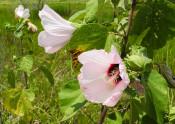 Tax Deduction via Bargain Sale - IRS A bargain sale is the sale of land or other assets to a charity, land trust, or other non-profit for less than fair market value. In general, the fair market value, less the sale price, can be deducted from your taxes as a charitable donation as long as the property has been held for at least one year by the landowner. In a single year, this deduction is limited to 30% of the donor’s adjusted gross income, but can be carried forward over five years. This can... Read More →
Tax Deduction via Bargain Sale - IRS A bargain sale is the sale of land or other assets to a charity, land trust, or other non-profit for less than fair market value. In general, the fair market value, less the sale price, can be deducted from your taxes as a charitable donation as long as the property has been held for at least one year by the landowner. In a single year, this deduction is limited to 30% of the donor’s adjusted gross income, but can be carried forward over five years. This can... Read More →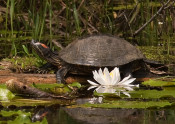 Tax Deduction via Donation of Land - IRS Real Estate Donation A landowner may be interested in gifting a property to a charity or land trust. When a charity or land trusts accepts a real estate donation, the landowner can deduct the fair market value of the land from his or her federal taxes. Depending on how long the landowner has held the property, deduction is capped at 30% (held for a year or more) or 50% (held for less than a year) of the adjusted gross income. Excess contributions can be carried forward for... Read More →
Tax Deduction via Donation of Land - IRS Real Estate Donation A landowner may be interested in gifting a property to a charity or land trust. When a charity or land trusts accepts a real estate donation, the landowner can deduct the fair market value of the land from his or her federal taxes. Depending on how long the landowner has held the property, deduction is capped at 30% (held for a year or more) or 50% (held for less than a year) of the adjusted gross income. Excess contributions can be carried forward for... Read More →

